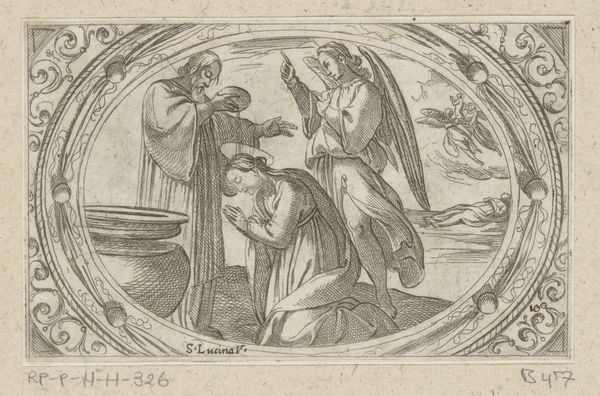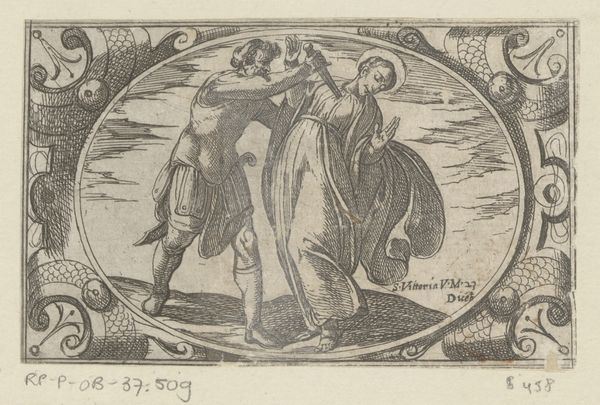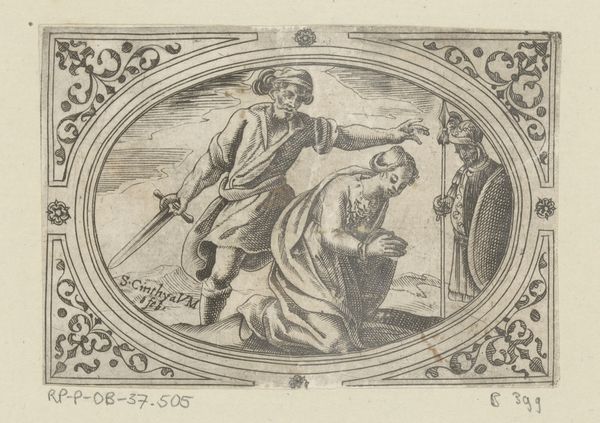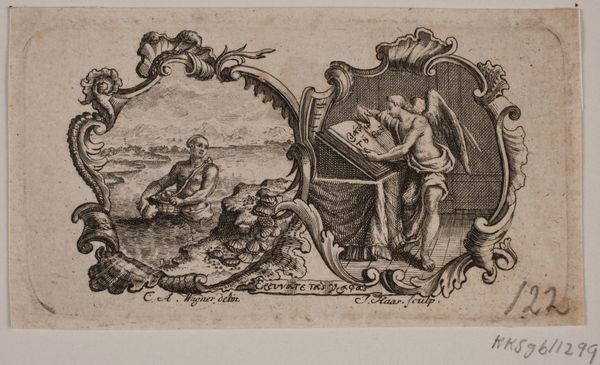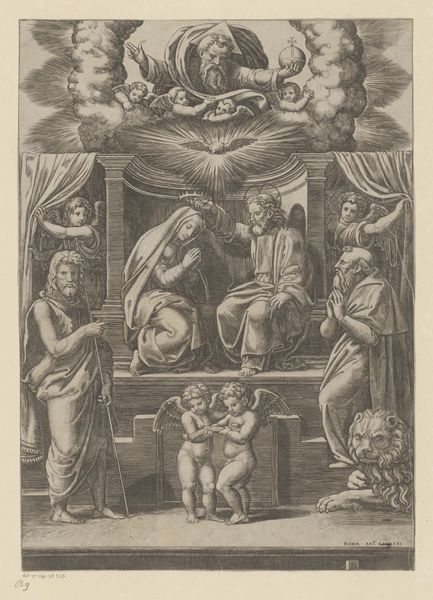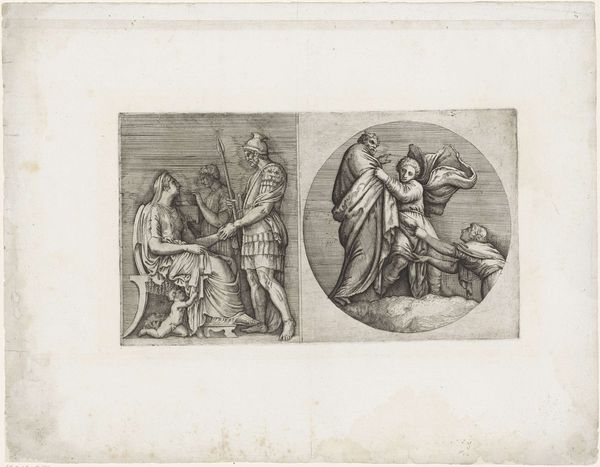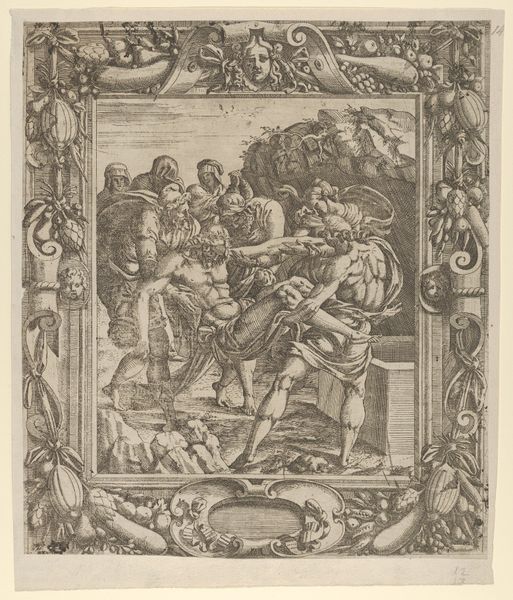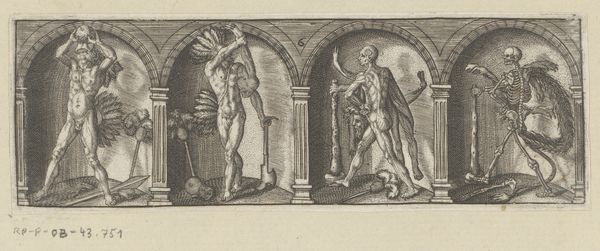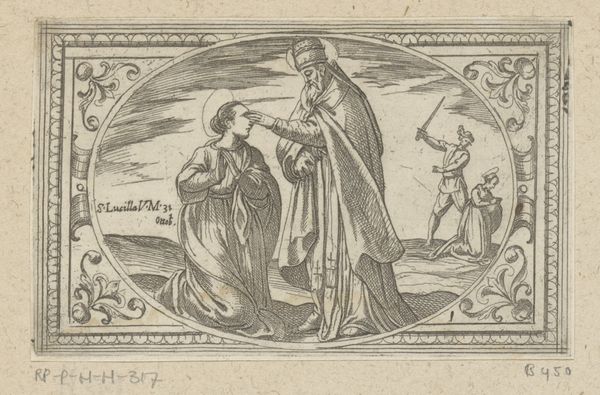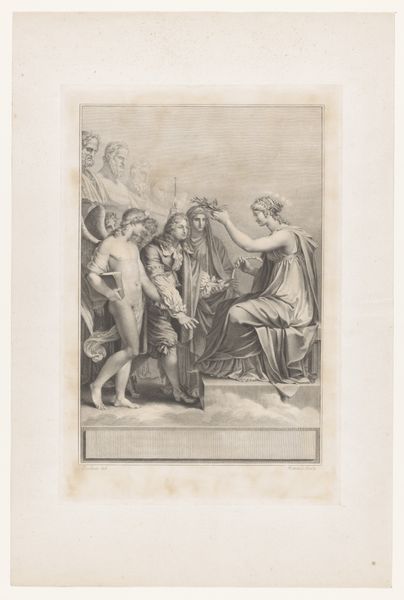
print, intaglio, engraving
#
narrative-art
#
baroque
# print
#
intaglio
#
figuration
#
history-painting
#
engraving
Dimensions: height 73 mm, width 114 mm
Copyright: Rijks Museum: Open Domain
Curator: Today, we're examining Antonio Tempesta's "H. Apollonia van Alexandrië," an engraving created between 1565 and 1630, part of the Rijksmuseum collection. Its monochrome austerity speaks volumes, wouldn’t you agree? Editor: Austerity, yes, but primarily violence. I see the stark representation of torture, a barbaric act against a woman, framed within a decorative oval. The juxtaposition is immediately unsettling. Curator: Observe how Tempesta utilizes intaglio to carve the dramatic scene. The composition directs our gaze sequentially, moving from Apollonia's torture to the flames consuming other martyrs, unified within an ornamented border. The fine network of engraved lines conveys a tonal range from almost stark white to deepest black creating striking contrasts and a remarkable level of detail for a small print. Editor: The historical context is critical here. Apollonia, the patron saint of dentistry, was martyred for her faith. Her teeth were violently extracted before she was burned. This image immortalizes, perhaps even glorifies, her suffering in service of religious ideology. We need to recognize that depictions like these were often used to reinforce societal power structures. Curator: Precisely! The lines radiate outwards, underscoring the moment’s inherent tension through carefully structured depth, achieving maximum impact via minimalist elements. Editor: That so called "impact" is born of violence. Who was this image really for? What role does this type of artwork play in the broader history of violence against women, particularly within a religious framework? Can the art itself be separated from the problematic celebration of female agony? Curator: While the ethical questions resonate, this composition is designed to elicit intense emotional resonance. The perspective leads the eye across the oval form toward its most terrible portions. It underscores how technically accomplished Baroque artwork visually renders sacred conviction in early modern Europe. Editor: I still find the framing aestheticizing and distancing. The beautiful border creates this paradoxical situation—we’re both horrified and yet invited to admire the artist’s skill, sanitizing a painful history of religious fanaticism and violence against women’s bodies. The artist’s technical ingenuity feels secondary. Curator: Your perspectives, while intense, make you see that, visually and ethically, the artwork presents various fascinating viewpoints. Editor: Agreed. Engaging with "H. Apollonia van Alexandrië" confronts us with a painful chapter of history and its troubling representation.
Comments
No comments
Be the first to comment and join the conversation on the ultimate creative platform.
